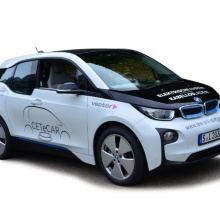The provision of a comprehensive charging infrastructure is indispensable for the distribution of electric vehicles. Thus, the "inductive charging" of electric vehicles is a step forward in various respects compared to the established conductive charging processes. Inductive charging systems enable the wireless charging of electric vehicles and offer advantages far beyond the higher operating comfort. They can be fully integrated into a car park floor and are therefore protected much better against vandalism than wired systems. Due to the lack of mechanical wear, inductive charging systems require less maintenance and servicing. They can also be protected better against external influences from the weather (rain, wind, ice, dust), as no accessible electrical contacts are required.
Further, wireless charging makes it possible to automate the charging process so that the battery can be charged automatically at any time, for instance in inner-city car parks, at traffic lights or on selected road sections. This measure is highly suitable for increasing the range of electric vehicles. In principle, inductive charging systems can achieve a comparably high degree of efficiency as wire-bound charging systems.
The diagram above shows a schematic structure and the components of an inductive charging system. With the help of the magnetic coupling of the coil systems, it is possible to load a vehicle both stationary and while driving. The primary coil is installed in the ground, while the secondary coil is integrated in the underbody of the vehicle. On the primary side, the power electronics consists of a power supply unit with mains-side power factor correction, an inverter which generates the AC voltage required for inductive energy transmission, and suitable reactive power compensation. Suitable reactive power compensation and a rectifier are used on the secondary side of the vehicle.
At the IEW, the main research activities focus in particular on two areas. On the one hand, research is being conducted into optimizing the coil system itself in order to achieve a high positioning tolerance while complying with the legally prescribed limit values of the magnetic field. On the other hand, the behavior of the overall system is examined and optimized to enable efficient operation while ensuring compatibility between systems with different nominal powers at the same time.



